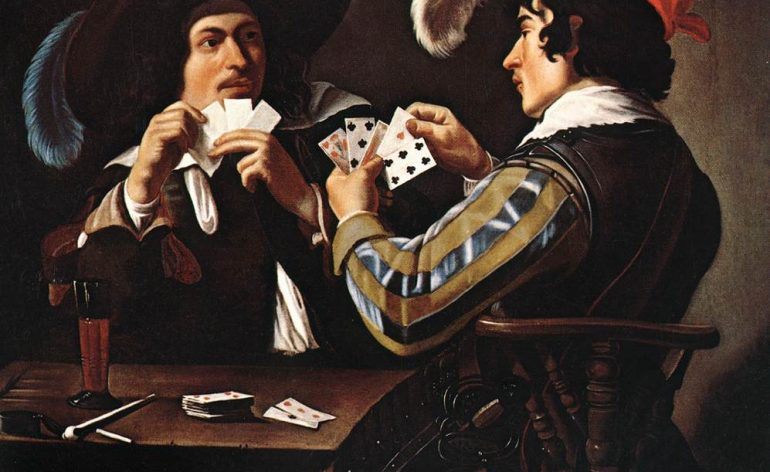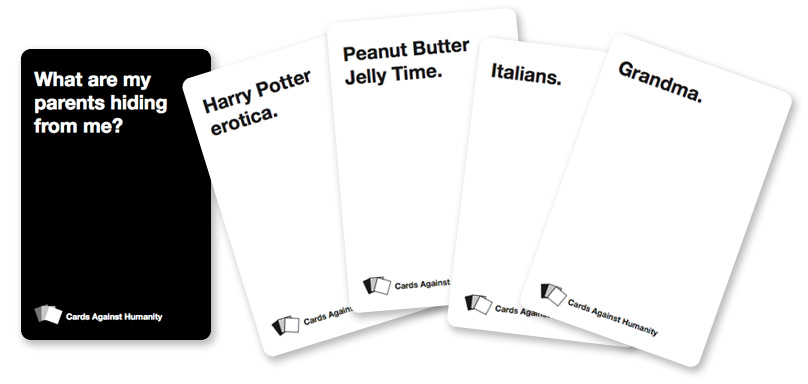Cards, Cards, Cards!
My love of single-deck card games has been well documented throughout my Dorkadia tenure. Single-deck card games require minimal investment in either time or money (which is perfect for me; I’m still embarrassed at how many meals I skipped to afford new packs of Magic cards back in the day). With the upcoming holiday season, many of you will no doubt be spending time in groups, either with your family, or your friends (who may or may not be avoiding their own families). The following are a few of my favorite single-deck card games, perfect for crowds. None of them are particularly difficult, and all of them are good for large groups. They also work as palette chasers, if you need a break in between that epic game of Axis and Allies or Eldritch Horror.
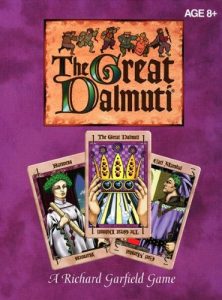 The Great Dalmuti
The Great Dalmuti
Possible Players: 3-8
Best With: 5-6
Games you could play in a row before moving on to something else? 5
The grandaddy of single-deck card games that weaned me from my Magic addiction. Dalmuti plays like the traditional card game Asshole. The cards are ranked from the Great Dalmuti to the lowly Peasant, and players try to shed your cards in groups, with the lowest-numbered card set taking the trick. (The deck contains one 1 card, two 2s, all the way to twelve 12s.) The winner is the first one to get rid of all their cards.
What sets Dalmuti apart is its between-game station changes. Before the first game, players are arranged in a hierarchy. Players are assigned one of four characters. One player is the Great Dalmuti, one the Lesser Dalmuti, one the Lesser Peon and one the Greater Peon, with the rest being Merchants. Before each new game, the Greater Peon must give the Great Dalmuti his two best cards, while the Lesser Peon gives the Lesser Dalmuti his best card. The Greater and Lesser Dalmutis return the favor, only they can give the Peons any card they wish. At the end of each round, the winner becomes the new Greeat Dalmuti, with the second-best player becoming the Lesser Dalmuti and so on. While it is possible to move up in the ranks, the card sway at the begging of each game does give the Great Dalmuti an advantage, and part of the fun is trying to unseat the current Great Dalmuti.
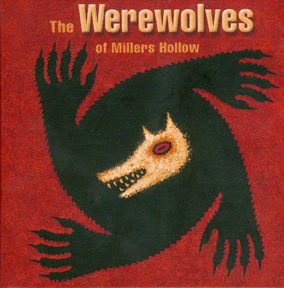 Werewolves of Miller’s Hollow
Werewolves of Miller’s Hollow
Possible Players: 8-18
Best With: 12
Games you could play in a row before moving on to something else? 2-3
What Dalmuti is to Asshole, so is Werewolves of Miller’s Hollow (WoMH) to the Russian card game Mafia. In WoMH, players receive one card face down at the beginning of the game. Their card is their character: some players are werewolves while the rest are scared villagers. At “night” the werewolves come in and kill a villager; it is up the the players to talk it over during the “day” to guess which players are werewolves before the werewolves kill them all.
WoMH is a great game if anyone in your group is more story inclined (during our last gaming session our GM guided us in the game, providing just the right amount of atmosphere). Players with good poker faces will also enjoy this game, as it requires a certain amount of plausible deniability if you’re the werewolf and are trying to throw the villagers off your trail. With the addition or commission of specific villager cards (such as the Fortune Teller, Sheriff, or Hunter) the game can be scaled to difficulty, which makes it a perfect game for later in the evening if you’ve had a few.
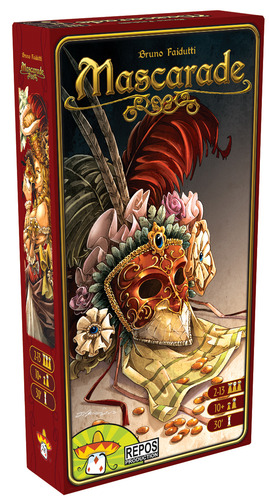 Mascarade
Mascarade
Possible Players: 2-12
Best With: 10
Games you could play in a row before moving on to something else? 2-3
A recent addition to my card-game collection, Mascarade is simpler than its dazzling artwork and numerous little fiddly bits suggests. The object of the game is to collect 13 coins. At the start of each game players are given a card and 5 coins. They look at their cards once before turning the card face down. During each players turn, they may look at their card, swap their card with another player (or not), or announce who they are and perform the action of their station. (A King takes three coins from the bank, for example, while the Witch may swap her coin collection with another player.) Resource cards come with the deck to remind players what actions their characters perform. The game ends when one player has 13 coins or any player goes bankrupt.
The bluffing aspect of this game makes it super fun in groups. If a player announces their character, any player may challenge, only the penalty for getting a challenge wrong is to pay a coin to the bank. In large groups its entirely possible to lose track of which character each player is, meaning the challenge stakes are that much higher. Games can also go by fairly quickly, since it’s possible to “forget” about a player until they’ve already won. Highly recommended for fans of beautiful design and simple gameplay.
Note: while it is possible to play Mascarade with 2-3 players, the game become infinitely more challenging. More is better here, although the instruction book does a good job walking you through how to play the game with fewer people.
Cards Against Humanity
Possible Players: 4-15
Best With: 6-8
Games you could play in a row before moving on to something else? infinite (or more likely 1 game that just goes on forever)
We’ve blogged about Cards Against Humanity (CAH) before, and if you’re caught up in pop culture you already know how fun this game can be. I’d like to draw your attention to the Canadian expansion, which is an excellent addition to the game if you’re playing against an inordinate amount of hockey hosers.

